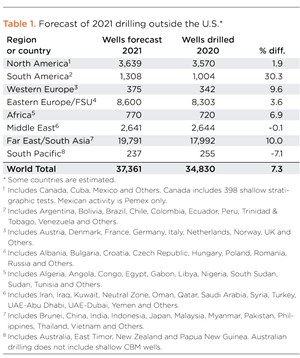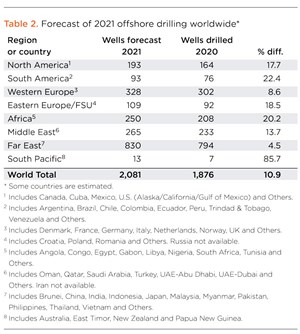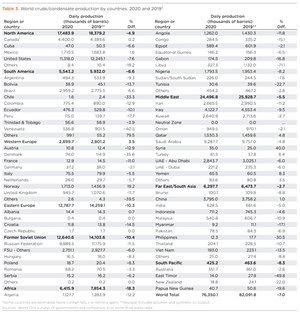Special Focus: 2021 Forecast & Review – International Drilling & Production
Look for South America, Far East/South Asia and Western Europe to lead with significant improvement. Offshore drilling will set a faster pace than onshore activity.
Following a tumultuous 2020, global drilling rates outside the U.S. are a bit of a mixed bag for 2021. Lingering economic effects from shutdowns and travel restrictions are impeding recovery in regions like Africa and Eastern Europe, while Western Europe and South America are finding their stride.
The number of wells drilled internationally during 2020 fell 12.9%, to 34,830. This year, we expect activity to rebound at a consistent pace in areas outside the U.S. and Canada. Considering the aforementioned factors, along with World Oil’s surveys of international petroleum ministries and departments, World Oil’s editorial staff forecasts 2021 international E&P activity, as follows:
- Canadian wells will edge up 1.3%, while Mexican drilling will rise 8.5%
- Global drilling, excluding the U.S., will increase 7.3%; without Canada, the rate of increase jumps to 7.9%, Table 1.
- Global offshore drilling is forecast to gain 10.9%, with increases expected in every region, Table 2.
Worldwide crude and condensate production was down a very significant 7.0%, dropping from 2019’s 82.1 MMbpd to last year’s 76.4 MMbpd, Table 3. This was due to the global drop in demand caused by the Covid-19 pandemic. Ironically, the drop would have been even more severe, had it not been for Saudi Arabia and Russia engaging in a price war/production dispute during first-quarter 2020, which saw both countries dump excessive amounts of oil on the market. All regions’ output was lower, except for Western Europe, which was up marginally, gaining 98,500 bopd.
NORTH AMERICA
Outside the U.S., North American drilling is slated to increase 1.9% during 2021, with modest growth in Canada, Cuba and Mexico.
Canada. The outlook for Canadian oil and gas production was impacted dramatically by the outcome of the U.S. Presidential election, leaving leadership in key oil-producing regions in a tough position. The cancellation of the Keystone XL pipeline, among others, eliminates nearly 600,000 bopd of export capacity that Alberta had counted on to support oil sands operations. Meanwhile, development operations offshore Newfoundland and Labrador, namely the West White Rose Project, remain suspended amid low oil prices and an increasingly challenging landscape for environmental regulation.
Parts of Canada’s economy are coming back to life, as the Trudeau administration attempts to square its climate objectives with the nation’s natural resource-based structure, and Alberta Premier Jason Kenney continues to demonstrate his resolve to defend oil and gas interests in his province. In the short run, the Canadian Association of Petroleum Producers expects drilling to increase 1.3% in 2021, to 3,300 wells, with offshore work up 25%.
Mexico. The Andres Manuel Lopez Obrador (AMLO) administration continues to pursue national energy policies that are capable of simultaneously hindering advances in both renewable energy and fossil fuel development, with particular emphasis paid to costly refinery development projects in his home state of Tabasco. Meanwhile, Pemex has forecast a nearly 70% decrease in exports of its flagship Maya heavy crude from 2021 to 2023. AMLO has suggested that rules governing the state-run energy industry may be changed again, to reverse efforts to open Mexico’s sector to third parties, with his Mexican Energy Reform Program creating significant uncertainty for non-state-owned operators in the region. Accordingly, we expect the Pemex share of Mexican drilling to increase 8.5% during 2021.
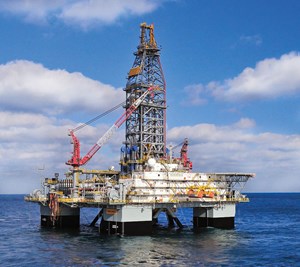
Those foreign operators that hold existing offshore blocks continue to work them. For instance, Talos Energy (operator, 35%) and its partners, Wintershall-DEA (40%) and Premier Oil (25%), have evaluated the Zama-1 discovery in Block 7 and expect to make a final investment decision later this year, Fig. 1. This will happen, once unitization of Zama field between Block 7 and the neighboring block (Pemex, 100%) is concluded. The unitization discussions are progressing, as per the Mexican regulatory process.
SOUTH AMERICA
A roster of new offshore discoveries and increasingly cooperative national-level leadership will make South America a bright spot for oil and gas operations in 2021. Even with the continued disintegration of Venezuela’s oil industry factored in, South American drilling is set to reverse a multi-year decline trend, with drilling forecast to jump 30.3% higher in 2021.
Brazil. President Jair Bolsonaro’s government views the oil and gas sector as key to uplifting the broader national economy, and supports an ambitious combination of tax reforms and regulatory changes to enable state firm Petrobras to boost growth. Meanwhile, domestic demand is already exceeding pre-pandemic levels, with further increases projected through 2021. Drilling is projected to increase 26.4% in Brazil this year.
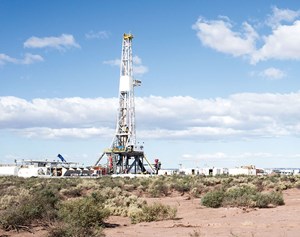
Argentina. In a bid to reduce its reliance on imported LNG, the Argentine government is implementing a $5.1-billion subsidy program to encourage domestic shale gas production in the Vaca Muerta formation, Fig. 2. This latest program hopes to attract $5 billion in outside investment, along with at least a dozen new drilling rigs. Infrastructure investments are also in the offing, with $600 million to be spent to upgrade two key Vaca Muerta pipelines. Based upon these new commitments, we project a 52.2% increase in Argentine drilling in 2021.
Venezuela. Economic sanctions from the U.S., along with crumbling infrastructure, have accelerated Venezuela’s crude oil production decline. Chevron and other foreign operators are expected to seek waiver extensions from the Biden administration to continue their limited operations in the country, but the state of PDVSA and its infrastructure is such that any meaningful recovery is well into the distance. To wit, Baker Hughes reports that no drilling has taken place in Venezuela since the final rig was laid down in October 2020. World Oil projects drilling to decrease -52.5% in Venezuela in 2021.
Colombia. Ecopetrol enjoys a reputation as one of the most stable E&P players in Latin America, and we expect the company to continue to focus on development drilling in its Llanos Norte, Middle Magdalena and Putumayo basins. Drilling in Colombia is forecast to continue at a high rate in 2021, increasing 44.1% over the prior year.
Guyana and Suriname. The increasingly prolific Guyana-Suriname basin is coming into its own as the next frontier in offshore oil and gas development. Hess announced another multi-billion-barrel discovery in the Stabroek Block last fall, while offshore and oilfield service companies rapidly expand in-country operations to progress operations already underway.
WESTERN EUROPE
New offshore exploration licenses in the North Sea show that oil and gas will play an important part in Western Europe’s energy mix for the foreseeable future, while operators and service companies also invest heavily in renewable energy development. As in 2020, divestitures of legacy offshore fields to smaller operators will play an important role in future drilling operations. World Oil anticipates that the United Kingdom will lead drilling growth, with regional activity expected to increase 9.6% in 2021.
Norway. With its known geography and proximity to existing infrastructure, the Norwegian Shelf will continue to be an engine for offshore drilling growth in 2021. Norway’s most recent licensing round granted 61 new offshore exploration permits across the North Sea, Norwegian Sea and Barents Sea. OPEC’s strategy to throttle production and increase Asian pricing continues to help Norway steal market share with its increasingly popular Johan Sverdrup cargoes. By striking a technical and regulatory balance between fossil fuel production projects and renewable energy goals, Norwegian drilling is expected to remain relatively flat in 2021, declining 2.2%.
United Kingdom. The trend of supermajors selling legacy assets to smaller operators on the UK Continental Shelf continues, with Exxon and Suncor leading the transition. The UK Oil and Gas Authority estimates that between 10 Bboe and 20 Bboe of recoverable petroleum reserves remain on the shelf, pointing to a long, albeit declining, future for offshore oil and gas production. Based upon the enthusiasm that smaller operators are showing for drilling the supermajors’ legacy assets, World Oil anticipates a 38.4% increase in drilling in the United Kingdom.
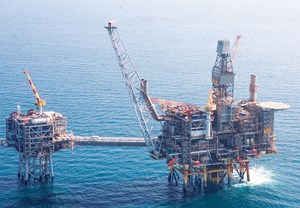
By the end of first-quarter 2021, two significant independent producers are scheduled to finish their merger. Chrysaor and Premier Oil will combine to form Harbour Energy, Fig. 3.
EASTERN EUROPE
This region is dominated by Russian activity. We expect the entire Eastern Europe/FSU region to increase drilling moderately, at nearly 4%. However, within this region, Russia will be up only 2%.
Russia. Deputy Premier Alexander Novak is performing a delicate balancing act, seeking to support OPEC+ pricing objectives while ensuring Russia maintains market share. Expanding LNG export infrastructure continues, while the Nord Stream 2 pipeline from Russia to Germany continues to draw the ire of U.S. regulators.
Evercore reported that while capital spending was down 19% last year, Rosneft still proceeded with full-scale development of the Erginsky license in West Siberia. Use of multi-stage horizontal techniques is increasing in Russia and accounted for 43% of Rosneft’s 2020 activity. Gazprom Neft is continuing with infrastructure development, utilizing the most efficient technologies available, Fig. 4.
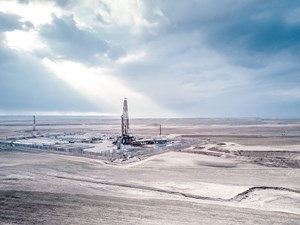
Meanwhile, in other parts of the FSU, field development in Kazakhstan and Azerbaijan was disrupted significantly by the Covid-19 pandemic. Also, countries in the Balkans continue to try to attract operators to new exploration prospects, as well as established fields, but progress is slow.
AFRICA
Following a 21% uptick in drilling during 2019, regional activity plummeted 34% in 2020, to just 720 wells. We predict that drilling in the region will improve by a moderate 6.9% in 2021.
Egypt has signed a billion-dollar deal with six international oil companies, including Chevron and ExxonMobil, to search for oil and gas in its Mediterranean and Red Sea waters, with 23 wells in nine separate regions. On land, Apex International Energy discovered oil in the Western Desert as part of a three-well exploration plan. World Oil expects drilling in Egypt to increase 3.1% this year.
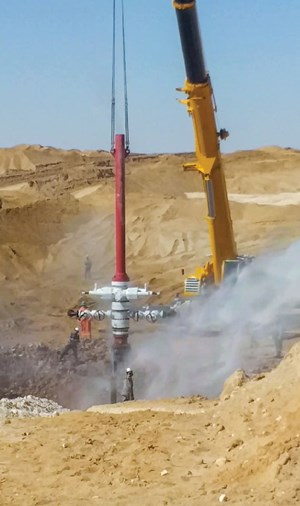
Facing years of mismanagement and lack of investment, Algeria is struggling to maintain oil and gas shipments, Fig. 5. Exports fell 30% in 2020, and they reached the lowest figures since 2017 this January. State-owned Sonatrach aims to increase gas exports 25% this year, while also cutting spending. Assuming Algeria allows more foreign investment into its oil and gas sector, we project a 1.4% increase in drilling for 2021.
Libya continues to struggle with the lingering impact of civil war on its oil and gas operations. Production surged to 1.25 MMbopd in January from nearly zero in September, only to see it drop again, when a critical export pipeline had to be shut down, due to maintenance neglect. Stabilizing leadership and an exemption from OPEC+ quotas will see Libyan production improve in relatively short order, and we project a modest 7.5% drilling increase in Libya in 2021.
Nigeria is experiencing a production renaissance, with smaller local operators buying out supermajors’ operations to improve production. Domestic driller Heirs Oil & Gas purchased an operating stake in Oil Mining Lease 17 from Shell, investing over $1 billion to eventually restore the block to its historic 100,000+ bpd output. Over the past 20 years, Heirs and several other Nigerian companies have raised billions of dollars to acquire blocks from the likes of Shell and Chevron. World Oil expects drilling in Nigeria to remain fairly flat, posting 1.1% growth in 2021.
Angola’s oil and gas industry, meanwhile, is posting dwindling outflows that may be indicative of long-term decline. Tying satellite offshore fields into existing floating production infrastructure stemmed the tide, but a shrinking inventory of new fields available for development is hampering output. As part of its Hydrocarbon Exploration Strategy 2020-2025, Angola plans to offer up to 520,000 km2 of new onshore concessions. We project drilling in Angola will increase 40.4% this year.
MIDDLE EAST
Among the world’s regions, the Middle East has been at a high rate of activity for several years now. This year, any further growth is being held back partially by the need of several OPEC members to adhere to production quotas resulting from the Covid-19 pandemic. Accordingly, Middle Eastern drilling will remain nearly flat this year.
Saudi Arabia has taken extraordinary measures to guide OPEC and its allies through the oil price slump of 2020, keeping members in line with production quotas and even unilaterally cutting its own output to support a nascent price recovery. Saudi Aramco announced that it would reduce its capex budget to $25 billion or less for 2021, delaying certain development projects, as the company seeks to maintain its annual $75-billion dividend. In the face of this, World Oil expects only a slight increase in Saudi Arabian drilling during 2020, Fig. 6.
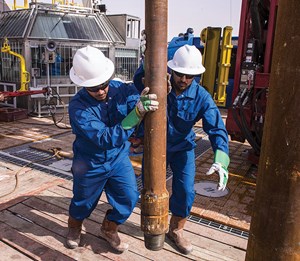
Iraq, the Middle East’s second-largest oil producer, is seeing new development interest from Russian and Chinese operators, even as it struggles to maintain OPEC+ quota compliance. Lukoil plans to expand its West Qurna 2 project in southern Iraq and start work in a separate Block 10 area. Nearby, China’s CNOOC is seeking to buy ExxonMobil’s stake in the West Qurna 1 field, with expected recoverable reserves of more than 20 Bbbl. We expect OPEC+ obligations to help keep drilling flat, edging down 0.8% in 2021.
UAE-Abu Dhabi. Government-owned Abu Dhabi National Oil Co. (ADNOC) is aggressively pursuing partnerships with Western operators to expand oil and unconventional gas output. The hands-on efforts of UAE Energy Minister Suhail Al-Mazrouei have seen multi-billion-dollar investments in new exploration, LNG exports, hydrogen development, and even a potential oil pipeline linking the UAE with Israel. Drilling is expected to increase 3.8% this year.
Oman, the largest Middle Eastern producer outside of OPEC, is expected to maintain a rapid drilling pace in 2021. A new government-owned energy firm, Energy Development Oman, has been formed to enable the sultanate to monetize its oil reserves, potentially setting a precedent for Middle Eastern nations that need to raise cash without impacting their balance sheets. Drilling in Oman will remain busy, with a 1.8% gain from 2020’s level predicted.
Turkey. President Recep Tayyip Erdogan continues to agitate his neighbors with seismic exploration and deepwater drilling projects. Turkey will add a second drillship to its Eastern Mediterranean and Black Sea programs this year, while also seeking to secure onshore exploration rights in Western Libya’s largest oil field, Sharara. These activities are straining relations with neighbor Greece and the broader EU in general—diplomatic efforts to reduce tensions between the two nations are, as yet, inconclusive.
FAR EAST
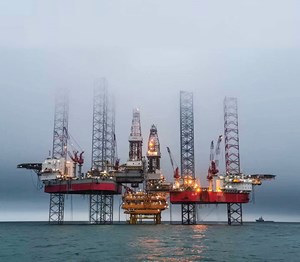
China’s drilling programs typically set the pace for the Far East average overall, and this year is no exception. Building upon an already sprawling drilling program, China will help lead the region to a 10.0% drilling increase for 2021.
China. Projected to surpass the U.S. as the world’s largest oil refiner, growing domestic demand will see China continue to develop its home-grown oil and gas production capabilities. Its economic recovery from the coronavirus is already well underway, shrinking domestic crude reserves by some 300 MMbbl since OPEC’s drastic production cuts in May 2020. To help meet this resurgent demand, drilling in China will increase 10.5% this year. Offshore activity is expected to remain steady with last year’s pace, Fig. 7.
Meanwhile, Indonesia continues to focus on domestic production to reduce exports. Drilling in the country will be up more than 5%. In addition, Malaysia had to slow down efforts to cements its status as a major LNG exporter, due to Covid-19, but drilling is picking up again this year.
SOUTH PACIFIC
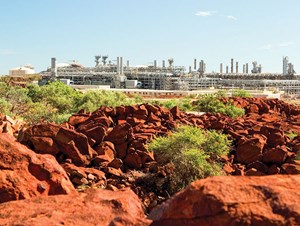
In the South Pacific, the region is basically a two-country realm of activity, and upstream work has become increasingly gas-focused. We expect the region’s drilling to be down 7.1%.
Australia is maintaining its ambition to become the world’s largest LNG exporter, but cost overruns and domestic shortages present challenges. And yet, new drilling is at the center of Australian plans to improve tax revenue while meeting domestic needs. Viewing these plans through the lens of Australia’s climate change objectives, World Oil expects drilling to decline 8.6% this year.
In January 2021, Woodside Energy announced that Woodside Burrup Pty Ltd (Woodside Burrup) and the North West Shelf (NWS) Project participants had finalized arrangements with the Western Australian government, enabling the supply of Pluto feed gas, via an interconnector pipeline, for processing at the NWS Project’s Karratha Gas Plant (KGP), Fig. 8. These arrangements follow the execution of a fully termed gas processing agreement in December 2020, between Woodside Burrup and the NWS Project participants to process approximately 3.0 million tonnes of LNG in aggregate and approximately 24.7 petajoules of domestic gas at KGP in the processing period (2022 to 2025).
In Papua New Guinea, Oil Search Ltd. has shifted its development focus to the two-train Papua LNG (Elk-Antelope) project. The Total-operated project will develop the Elk and Antelope gas fields. It also will construct two LNG trains at the existing PNG LNG site.
- Breakthroughs in geothermal drilling: Eavor’s FOAK closed-loop commercial project in Germany (November 2025)
- What LNG and AI mean for drilling in 2030 (November 2025)
- First Oil: A grand plan designed for U.S. offshore leasing (November 2025)
- Weatherford’s strategic approach to directional drilling (October 2025)
- Managed pressure drilling to manage pressure wells: Managed pressure unlocks offshore success (October 2025)
- Integrated fluid cooling technologies boost drilling efficiency in high-temperature environments (October 2025)
- Subsea technology- Corrosion monitoring: From failure to success (February 2024)
- Applying ultra-deep LWD resistivity technology successfully in a SAGD operation (May 2019)
- Adoption of wireless intelligent completions advances (May 2019)
- Majors double down as takeaway crunch eases (April 2019)
- What’s new in well logging and formation evaluation (April 2019)
- Qualification of a 20,000-psi subsea BOP: A collaborative approach (February 2019)

